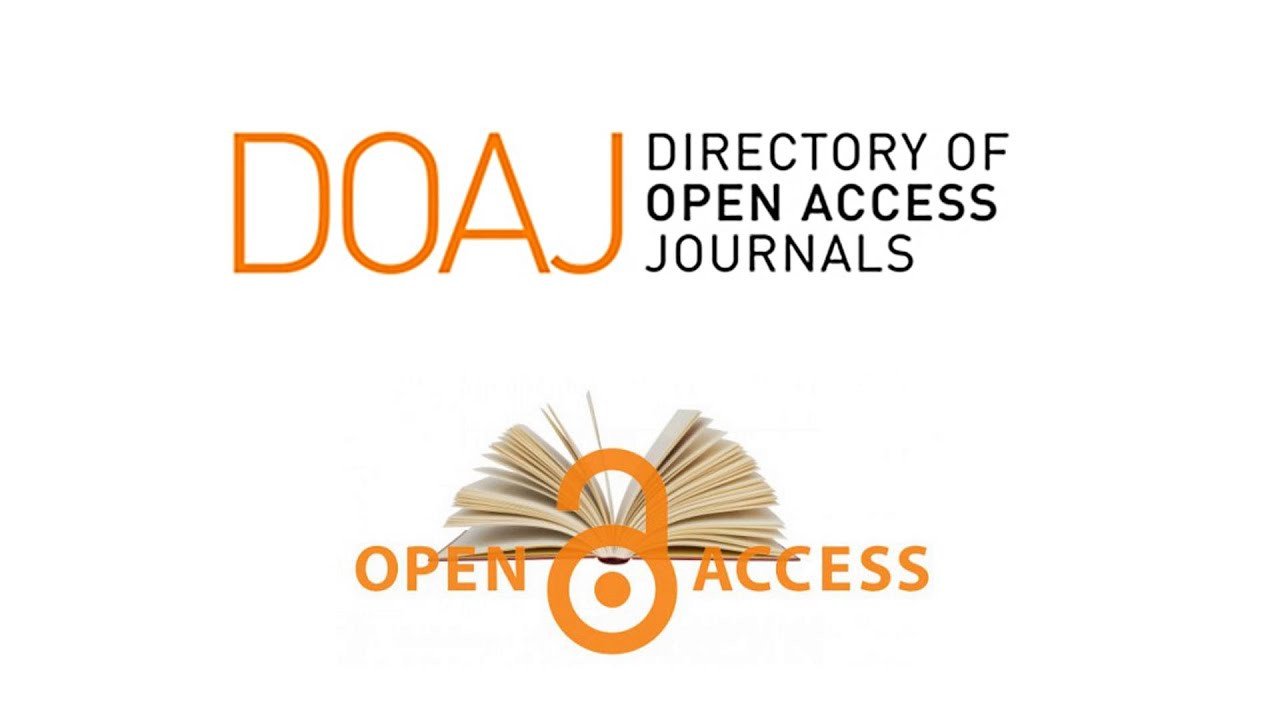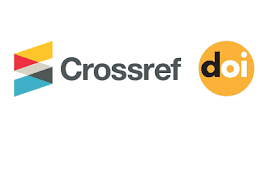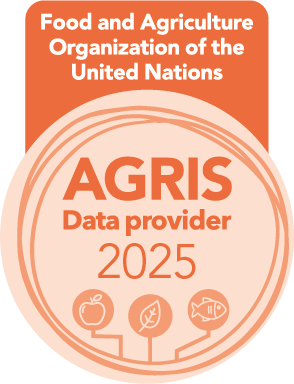Extraction of gelatin from fish wastes for use in diets for the goldfish Carassius auratus
Keywords:
Fish diet, gelatin, Fish nutrition, goldfishAbstract
The current study aimed to extract gelatin from the skins of the oriental sole Brachirus orientalis using a chemical method. The chemical composition of the extracted gelatin showed a moisture content of 9.66%, a high protein content of 86.11%, a fat content of 1.44%, and an ash content of 2.69%. The results of amino acid analysis of the gelatin protein indicated the presence of 17 amino acids. The highest concentration was for threonine at 72.13 mg/g and glutamic acid at 89.79 mg/g, while lysine and aspartic acid had the lowest concentrations at 18.72 mg/g and 10.44 mg/g, respectively. The results showed a variation in the chemical composition between the different diets. The highest protein content was observed in the T3 diet, with a value of 31.91%, compared to the other treatments C, T1, and T2, which recorded values of 30.25%, 30.74%, and 31.52%, respectively. The highest values for final weight, total weight gain, daily growth, specific growth rate, relative growth, and feed conversion ratio were recorded in the T3 diet, with values of 171.79 g, 84.86 g, 1.13 g/day, 4.02%/day, 1.30%, and 3.21, respectively. The lowest values for these parameters were observed in the control diet C, with values of 131.97 g, 45.09 g, 0.60 g/day, 2.71%/day, 0.69%, and 5.24, respectively. The results demonstrated that the use of gelatin in T1, T2, and T3 diets provided good growth compared to the control diet, which lacked gelatin addition. The T3 diet outperformed all other diets in growth parameters, indicating the success of using protein products in fish diet across all treatments. However, the T3 diet was the best, with a significant difference (P < 0.05) compared to other treatments. The T3 diet also showed the best physical properties (density, buoyancy, sinking speed, and disintegration) compared to the other diets. Statistical analysis revealed significant differences between treatments (P < 0.05).
Metrics
References
Abdulwahab, H.B.; Al-Noor, J.M. and Al-Dubakel, A.Y. (2023). Using Shrimp Waste Protein Concentrate Prepared with Different Methods for Preparation of the Young Common Carp Cyprinus carpio L. Diets. Egyptian Journal of Aquatic Biology and Fisheries, 27 (6): 837 – 847.
Al-Hilphy, A.R.; Al-Shatty, S.M.; Al-Mtury, A.A.A. and Gavahian, M. (2020). Infrared-assisted oil extraction for valorization of carp viscera: Effects of process parameters, mathematical modelling, and process optimization. LWT, 129: 109541, https//c doi.org/10.1016/j.lwt.2020.109541.
Al-Dubakel, A.Y.; Al-Noor, J.M. and Al-Shatty, S.M. (2014). Application of fish gelatin as diet binder in diets for the common carp Cyprinus carpio L. fingerlings. Journal of Zankoy Sulaimani- Part A, Special Issue. 16, 345 – 354.
Alfaro, A.D.T.; Balbinot, E.; Weber, C.I; Tonial, I.B. and Machado-Lunkes, A. (2015). Fish Gelatin: Characteristics, Functional Properties, Applications and Future Potentials. Food Engineering Reviews, 6, (4): 1 – 14. DOI 10.1007/s12393-014-9096-5.
Alipal, J.; Mohd Pu'ad, N.A.S.; Lee, T.C.; Nayan, N.H.M.; Sahari, N.; Basri, H.; Idris, M.I. and Abdullah, H.Z. (2021). A review of gelatin: Properties, sources, process, applications, and commercialization. Materials Today: Proceedings, 42 (1): 240 - 250.
Al-Janabi, M.F.; Al-Noor, J.M. and Al-Dubakel, A.Y. (2022). Assessment of Thepax and Bio Boost for promoting microbial growth in common carp intestines Cyprinus carpio. Revis Bionatura 2022;7(4) 18. http://dx.doi.org/10.21931/RB/2022.07.04.18.
Al-Nimry, S.; Abu Dayah, A.; Hasan, I.; Daghmash, R. (2021). Cosmetic, Biomedical and Pharmaceutical Applications of Fish Gelatin/Hydrolysates. Mar. Drugs, 19, 145.
Al-Noor, J.M.; Al-Dubakel, A.Y. and Al-Shatty, S.M.H. (2013). Functional Properties of Gelatin Extracted from Fish Wastes. Basrah J. Agric. Sci., 26 (Special Issue 2),72 – 89.
Al-Shatty, S.M.H.; Al-Noor, J.M. and Al-Dubakel, A.Y. (2016). Using of Extracted gelatien from fish wastes as a nitrogen source in microbiological media. Basra Research Journal, 42, B, 176 – 190.
Al-Tameemi, R.A. (2015). Evaluation of five commercial diets used for fish feeding in Basra Governorate, Southern Iraq. Iraqi Journal of Aquaculture, 12 (1): 71 – 82.
Amtul, B. T. and Amna, B. (2012). Replacement of fish meal with poultry by–product meal (chicken intestine) as a protein source in grass carp fry diet. Pakistan Journal of Zoology, 44 (5): 1373 – 1381.
Argüello-Guevara, W. and Molina-Poveda, C. (2012). Effect of binder type and concentration on prepared feed stability, feed ingestion and digestibility of Litopenaeus vannamei broodstock diets. Aquaculture Nutrition, 1 – 8.
Atma, Y. (2017). Amino acid and proximate composition of fish bone gelatin from different warm-water species: A comparative study. Earth and Environmental Science,58, 1 – 5. doi:10.1088/1755-1315/58/1/012008.
Aydın, B. and Gümüş, E. (2013). Replacement of fishmeal by poultry by-product meal, supplemented with lysine, methionine, and threonine, in diets for fry of Nile tilapia (Oreochromis niloticus).The Israeli Journal of Aquaculture-Bamidgeh, IIC:65.2013.885,7 p.
Ayuba, V.O. and Iorkohol, E.K. (2013). Proximate composition of some commercial fish feeds sold in Nigeria. Journal of Fisheries and Aquatic Science, 8, (1): 248-252.
Behnke, K, C., (2001). Factors influencing pellet quality. Feed Technology, 5 (4): 19 – 22.
Bigi, A.; Panzavolta, S., and Rubini, K. (2004). Relationship between triplehelix content and mechanical properties of gelatin films. Biomaterials, 25, 5675 – 5680.
Binsi, P.K.; Shamasundar, B.A.; Dileep, A.O.; Badii, F. and Howell N.K. (2009). Rheological and functional properties of gelatin from the skin of Big eye snapper (Priacanthus hamrur) fish: influence of gelatin on the gel-forming ability of fish mince. Food Hydrocolloids, 23(1): 132 – 145.
Bordignon, C.A.; Franco, S.D.R.L.; Gasparino, E.; Yanjima, M.E.; Del Vesco, P.A.; Visentainer, V.J. and Mikcha, G.M.J. (2012). Utilization of frozen and salted Nile tilapia skin for batch processed gelatin extraction. Revista Brasileira de Zootecnia, 41, (3): 473 –478.
Cerezo Valverde, J.; Hernández, M.; Aguado-Giménez, F.; García García, B. (2008). Growth, feed efficiency and condition of common octopus (Octopus vulgaris) fed on two formulated moist diets. Aquaculture, 275, 266 – 273.
Cho, S.; Jahncke, M. L.; Chin, K. and Eun, J. (2006). The effect of processing conditions on the properties of gelatin from skate (Raja Kenojei) skins. Food Hydrocolloids, 20, (6): 810 – 816.
Egan, H.; Kirk, R. S. and Sawyer, R. (1988). Pearson’s chemical analysis of foods. 8th ed., Longman Scientific and Technical, The Bath Press, UK.
Fagbenro, O. and Jauncey, K. (1995). Water stability, nutrient leaching and nutritional properties of moist fermented fish silage diets. Aquacultural Engineering, 14, 143 – 153. https://doi.org/10.1016/0144-8609(94) P4432-B.
Gao, S.; Han, D.; Zhu, X.; Yang, Y.; Liu, H.; Xie, S. and Jin, J. (2020). Effects of gelatin or carboxymethyl cellulose supplementation during pelleting processing on feed quality, intestinal ultrastructure and growth performance in gibel carp (Carassius gibelio). Aquacult Nutr. 2020; 00:1–11. https://doi.org/10.1111/ anu.13080.
Grossman, S. and Bergman, M. (1992). Process for the production of gelatin from fish skin. United States Patent No. 5,093,474.
Hepher, B. (1988). Nutrition of pond fishes. Cambridge Univ. Press, London, 338 p.
Huang, Y.R.; Shiau, C.Y.; Chen, H.H. and Huang, B.C. (2011). Isolation and characterization of acid and pepsin-solubilized collagens from the skin of balloon fish (Diodon holocanthus). Food Hydrocolloids, 25, (6): 1507 – 1513. doi: 10.1016/j.foodhyd.2011.02.011.
Hudson, C. B. (1994). Gelatin relation structure and chemistry to functionality. In: Nishihari, K. and Doi, E.(Eds.), Food hydrocolloids: Structures, Properties and functions, New York.
Izzati, H.; Zainol. and Hanim, H. (2017). Low molecular weight collagen from tilapia fish scales for potential cosmetic application. Der Pharma Chemica, 9, (7):108 – 114.
Jaber, S.M. and Najim, S.M. (2022). Preparation and utilization of fish waste protein concentrate in diets for young common carp, Cyprinus carpio L. Caspian journal of environmental Science, 311 – 316. DOI: 10.22124/CJES.2023.6494.
Jakhar, J.K.; Reddy, A.D.; Maharia, S.; Devi, H.M.; Reddy, G.V.S. and Venkateshwarlu, G. (2012). Characterization of fish gelatin from Blackspotted Croaker (Protonibea diacanthus). Archives of Applied Science Research, 4 (3) :1353 – 1358.
Jassim, I.J.; Najim, S.M. and Al-Noor, J. M. (2024). Exploitation of Raw, Fermented and Microwave- Heated Rice Bran as Carbohydrate Alternatives in Young Common Carp (Cyprinus carpio L.) Diets. Egyptian Journal of Aquatic Biology and Fisheries, 28(2): 217 – 234
Jobling, M. (1993). Bioenergetics feed intake and energy partitioning. In: Rankin, J.C. and Jensen, F.B. (Eds.), Fish physiology. London : Chapman and Hall, pp: 1 – 44.
Karim, A.; Naila, B.; Khwaja, S.; Hussain, S.I. and Ghafar, M. (2024). Evaluation of different Starch Binders on physical quality of fish feed pellets. Brazilian Journal of Biology, 2024, vol. 84, 1 – 5. e256242 | https://doi.org/10.1590/1519-6984.256242.
Khiari, Z.; Rico, D.; Martion – Diana, A.B. and Barry – Ryan, C. (2011). The extraction of gelatine from Mackerel (Scomber scombrus) heads with the use of different organic acids. Journal of Fisheries Sciences, 5 (1): 52 – 63.
Lal, J.; Biswas, P.; Singh, S.K.; Debbarma, R.; Mehta, N.K.; Deb, S.; Sharma, S.; Waikhom, G. and Patel, A.B. (2023). Moving towards Gel for Fish Feeding: Focus on Functional Properties and Its Acceptance. Gels, 9, 305, 1 – 18. https://doi.org/10.3390/gels9040305
Lestari, N.; Manalu, L.P.; Hidayat, T.; Junaidi1, L.; Hartanto, E.S.; Rienoviar, Saputra, S.H.; Zulham, A. and Mala, D.M. (2024). The effect of citric and acetic acid treatment on gelatin production from catfish skin. BIO Web of Conferences 87, 03004 (2024) ICFAES 2023 https://doi.org/10.1051/bioconf/20248703004.
Lovell, T. (1989). Nutrition and feeding of fish. Van Nostrand Reinhold Publishers. New York. 260 p.
Mahmood, K.; Muhammad, L. and Ariffin, F. (2016). Review of Fish Gelatin Extraction, Properties and Packaging Applications. Food Science and Quality Management, 56, 47 – 59.
McWilliams, M. (2001). Food experimental perspectives. 4th ed., Englewood cliffs, NJ: prentice Hall.
Misra, C.K.; Sahu, N.P. and Jain, K.K. (2002). Effect of extrusion processing and steam pelleting diets on pellet durability, water absorption and physical response of (Macrobrachium rosenbergii). Asia Austral. J. Anim., 15, (9): 1354 – 1358.
Muyonga, J.H.; Cole, C.G.B. and Duodu, K.G. (2004). Extraction and physicochemical characterization of Nile perch (Lates niloticus) skin and bone gelatin. Food Hydrocolloids, 18: 581 – 592.
Najim, S.M.; Al-Noor, J.M. and Al-Waely, W.A. (2015). Extraction of crude peptone from fish wastes for use as a nitrogen source in microbiological media. Global Journal of Fisheries and Aquaculture Researches, 2, 29 – 37.
Nurilmala, M.; Hizbullah, H.H.; Karnia, E.; Kusumaningtyas, E. and Ochiai, Y. (2020). Characterization and antioxidant activity of collagen, gelatin, and the derived peptides from yellowfin tuna (Thunnus albacares) skin. Mar. Drugs. 18, 98.
Nurilmala, M.; Ramadhan, W. and Putri, A.N. (2024). Characteristics of tilapia fish scale gelatin and its application in surimi. 6th EMBRIO International Symposium (EIS 2023), 1 – 14. https://doi.org/10.1051/bioconf/202411209001.
Nurilmala, M.; Suryamarevita, H.; Hizbullah, H.H.; Jacoeb, A. M. and Ochiai, S. (2022). Fish skin as a biomaterial for halal collagen and gelatin. Saudi Journal of Biological Sciences, 29, (2): 1100 – 1110.
Orisasona, O. (2018). Utilisation of A Poultry Wastes Meal as A Replacement for Fishmeal in Diets of Clarias gariepinus, African Journal of Resources Management Fisheries and Aquatic, 3: 1 – 7.
Palma, J.; Bureau, D. P. and Andrade, J. P. (2008). Effects of binder type and binder addition on the growth of juvenile Palaemonetes varians and Palaemon elegans (Crustacea Palaemonidae). Aquaculture International, 16, 427 – 436. https://doi.org/10.1007/ s10499-007-9155-5.
Palma, J.; Bureau, D.P. and Andrade, J.P. (2008). Effects of binder type and binder addition on the growth of juvenile Palaemonetes varians and Palaemon elegans (Crustacea: Palaemonidae). Aquaculture International, 16, 427– 436. https://doi.org/10.1007/ s10499-007-9155-5.
Prasanthi, N.; Bhargavi, S. and Machiraju, P.V.S. (2016). Chicken Feather Waste – A Threat to the Environment. Int. J. Innov. Res. Sci. Eng. Technol, 9, (167): 59 – 64.
Quintana, D.; Domingues, P. and Garcíam, S. (2008). Effect of two artificial wet diets agglutinated with gelatin on feed and growth performance of common octopus (Octopus vulgaris) sub-adults. Aquaculture, 280, (2008) 161 – 164. doi: 10.1016/j.aquaculture.2008.04.017.
Renuka, V.; Remya, S.; Jha, A.K. and Joseph, T.C. (2017). Nature and Composition of Fish Processing Industrial Waste and Handling Protocols, FishTech-19, Fishery waste management: Challenges and Business Opportunities in Gujarat, 25 – 37.
Saalah, T.; Shapawi, R.; Othman N.A. and Bono, A. (2010). Effect of formula variation in the properties of fish feed pellet. Journal Applied Science, 10: 2537 – 2547.
Salih, A.W.; Najim, S.M. and Al-Noor, J.M. (2021). Some Physical, Chemical and Sensory Properties of Fish Oil Extracted from Fish Wastes by Physical and Chemical Methods. Biol. Appl. Environ. Res., 5, (1): 152 – 162. https://doi.org/10.51304/baer.2021.5.1.152.
See, S.F.; Hong, P.K.; Ng, K.L.; Wan Aida, W.M. and Babji, A.S. (2010). Physiochemical properties of gelatins extracted form skins of different freshwater fish species. International Food Research Journal, 17: 809 – 816.
Sevier, H.; Raae, A.J. and Lied, E. (2000). Growth and protein turnover in Atlantic salmon (Salmo salar): the effect of dietary protein level and protein size. Aquaculture 185: 10-20.
Tacon, A.G.J (1990). Standard methods for the nutrition and feeding of farmed fish and shrimp. In: Nutritive Sources and Composition. (2). Argent Laboratories Press, Redmond, W.A. 129 p.
Taher, M. M.; Muhammed, S. J.; Mojer, A.M. and Al-Dubakel, A. Y. (2022). The effect of some food additives on growth parameters of grass carp Ctenopharyngodon idella fingerlings. Basrah Journal of Agricultural Sciences, 35, (1): 120 – 131.
Tesfaye, T., Sithole, and, Ramjugernath, D. (2018). Preparation, characterisation and application of keratin based green biofilms from Waste Chicken Feathers. International Journal of Chemical Sciences, 16: 1–16.
Tong, F.; Bai, J.; Tang, Z.; Li, C.; Liu, S. and We, Z. (2023). Replacing Fish Meal with Hydrolyzed Collagen Derived from Fish By-Products Improved Muscle Quality and Glycolipid Metabolism of Triploid Crucian Carp. Foods 2023, 12, 1235, 1 – 21. https://doi.org/10.3390/foods12061235.
Vidotti, R.M.; Viegas, E.M.M. and Carneiro, D.J. (2003). Amino acid composition of processed fish silage using different raw materials. Animal Feed Science and Technology, 105: 199 – 204.
Viles, A.; Karahmet1, E.; Toroman, A. and Kokorovic, E. (2013). Chemical composition of Rainbow Trout waste. Proceedings – 24th International Scientific-Expert Conference of Agriculture and Food Industry, 48 – 51.
Vineis, C.; Varesano, A.; Varchi, G. and Aluigi, A. (2019). Extraction and Characterization of Keratin from Different Biomasses. In: Sharma S., Kumar A. (eds) Keratin as a Protein Biopolymer. Springer Series on Polymer and Composite Materials. Springer, Cham: 35 – 76.
Wahyuningtyas, M.; Jadid, N.; Burhan, P. and Atmaja, L. (2019). Physical and Chemical Properties of Gelatin from Red Snapper Scales: Temperature Effects, Jurnal Teknik Its, 8, (2): 95 – 101.
Wang, J.; Pei, X.; Liu, H.and Zhou, D. (2018). Extraction and characterization of acid-soluble and pepsin-soluble collagen from skin of loach (Misgurnus anguillicaudatus). International Journal of Biological Macromolecules, 106, 544 – 550.
Ward, A.G. and Courts, A. (1977). The science and technology of gelatin, Academic Press Inc. London.
Wheaton, F.W.; Singh, S.; Hochheimer, J.N. and Soares, J.H., (2002). A study of selected fish feed binders: effect on generated waste quantity and quality. Proceedings of the 2nd International Conference on Recirculating Aquaculture Virg-inia Cooperative Extension Program Virginia Polytechnic-Institute and State University.
Wu, J.; Xiao, J.; Zhu, M.; Yang, H.; Liu, J.; Liu, Y. (2023). Study of Physicochemical and Gelation Properties of Fish Gelatin from Different Sources. Applied Sciences, 13, (9):5337. https://doi.org/10.3390/app13095337.
Zaelani, B.F.D.; Safithri, M.; Tarman, K.; Setyaningsih, I. and Meydia. (2019). Collagen isolation with acid soluble method from the skin of Red Snapper (lutjanus sp.). IOP Conf. Series: Earth and Environmental Science, 241, 012033. doi:10.1088/1755-1315/241/1/012033.
Zeng, S.; Wu, W.; Zhang, C.; Yin, J. and Li, Z. (2015). Antioxidant activity of collagen hydrolysate obtained from tilapia scales in vitro and in vivo assays.3rd International Conference on Material, Mechanical and Manufacturing Engineering, pp:311 – 315.
Zhu, L. J.; Shukri, R.; Mesa-Stonestreet, N. J. D.; Alavi, S.; Dogan, H. and Shi, Y. C. (2010). Mechanical and microstructural properties of soy protein-high amylose corn starch extrudates in relation to physiochemical changes of starch during extrusion. Journal of Food Engineering, 100, 232 – 238. https://doi.org/10.1016/j.jfoodeng.2010.04.004
Downloads
Published
How to Cite
Issue
Section
License
Copyright (c) 2025 Iraqi Journal of Aquaculture

This work is licensed under a Creative Commons Attribution 4.0 International License.






